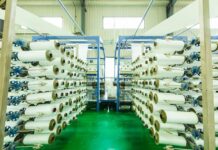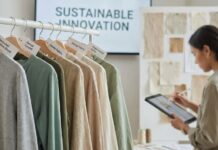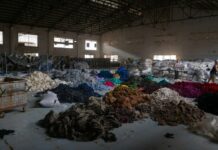World Earth Day, celebrated annually on April 22, serves as a global reminder of our responsibility to protect the planet and promote sustainability. In 2025, the theme emphasizes the urgent need for sustainable practices across various industries, particularly in the apparel and textile sector, which has a significant environmental impact. This article explores the causes of environmental degradation in fashion and outlines essential steps that both buyers and manufacturers can take to create a more sustainable future through sustainable fashion industry practices.
Understanding the Environmental Impact of the Fashion Industry
The fashion industry is notorious for its environmental footprint. According to the United Nations, the industry is responsible for approximately 10% of global carbon emissions, and it consumes vast quantities of water and energy. The production of textiles often involves harmful chemicals, contributing to water pollution and soil degradation. Fast fashion, characterized by the rapid production of low-cost clothing, exacerbates these issues by promoting a culture of disposability.
One striking example is the environmental disaster in the Aral Sea, where the cotton industry has led to a significant decrease in water levels due to excessive irrigation practices. As water sources dwindle, ecosystems collapse, and local communities suffer. This example highlights the critical need for sustainable fashion industry practices in the textile industry to mitigate its environmental impact.
Steps for Buyers: Making Responsible Choices
As consumers, individuals have the power to drive change through their shopping habits. Here are some important steps buyers can take to promote sustainability in the fashion industry through sustainable fashion industry practices:
1. Choose Sustainable Brands
Consumers should seek out brands that prioritize sustainability in their production processes. This includes companies that use organic or recycled materials, employ eco-friendly dyes, and ensure fair labor practices. Brands like Patagonia and Eileen Fisher are leading examples, offering products made from recycled materials while ensuring fair wages for workers.
2. Invest in Quality Over Quantity
Instead of indulging in fast fashion trends, buyers should focus on investing in high-quality, timeless pieces that are durable and can be worn for years. This approach not only reduces waste but also encourages a more thoughtful consumption mindset. For instance, a well-made wool coat can last a lifetime, whereas cheaper, trend-driven items often end up in landfills within months.
3. Practice Smart Shopping
Buyers can adopt a more intentional shopping strategy by following a few guidelines:
-
Check Labels: Look for certifications like Global Organic Textile Standard (GOTS) or OEKO-TEX, which indicate that products meet environmental and social criteria.
-
Buy Second-Hand: Thrift shopping and swapping clothes with friends can significantly reduce the demand for new garments, thereby minimizing waste.
4. Engage in Recycling and Upcycling
Consumers can contribute to sustainability by recycling or upcycling their old clothes. Many brands, such as H&M, offer take-back programs that allow customers to return used garments for recycling. By engaging in these sustainable fashion industry practices, buyers can reduce the amount of textile waste that ends up in landfills.
Steps for Manufacturers: Embracing Sustainable Practices
Manufacturers have a crucial role to play in creating a sustainable fashion industry. Implementing the following practices can significantly reduce the industry’s environmental impact while promoting sustainable fashion industry practices:
1. Adopt Eco-Friendly Materials
Manufacturers should prioritize the use of sustainable materials, such as organic cotton, Tencel, and recycled polyester. By sourcing materials that have a lower environmental impact, manufacturers can reduce their reliance on harmful chemicals and resource-intensive processes. For example, brands like Reformation have successfully integrated sustainable fabrics into their collections, promoting a circular economy.
2. Enhance Production Processes
Implementing energy-efficient production processes can help manufacturers minimize their carbon footprints. This includes using renewable energy sources, optimizing water usage, and reducing waste. For instance, brands like Levi’s have invested in water-saving technologies that significantly reduce water consumption during the denim production process.
3. Implement Ethical Labor Practices
Ensuring fair wages and safe working conditions is paramount for manufacturers. By adhering to ethical labor practices, companies can contribute to social sustainability while enhancing their brand reputation. For example, the Fair Trade Certified label ensures that workers are paid fair wages and work in safe environments.
4. Invest in Technology and Innovation
Manufacturers can explore innovative solutions to make their processes more sustainable. Technologies like 3D printing, digital fabric printing, and automation can reduce waste and energy consumption. Brands like Unmade are already utilizing digital technologies to create made-to-order clothing, minimizing unsold inventory and reducing waste.
5. Foster Transparency and Accountability
Establishing transparency in the supply chain allows manufacturers to build trust with consumers. By openly sharing information about sourcing, production processes, and labor practices, companies can demonstrate their commitment to sustainability. Brands like Everlane have gained customer loyalty through their transparent pricing and commitment to ethical practices.
Conclusion: A Collective Responsibility
With World Earth Day 2025 approaching, it is essential for both buyers and manufacturers in the apparel and textile industry to take concrete steps towards sustainability through sustainable fashion industry practices. By making informed choices and adopting responsible practices, we can mitigate the environmental impact of fashion and promote a healthier planet.
As consumers, we have the power to influence brands and demand change. Simultaneously, manufacturers must embrace sustainable practices to foster a circular economy that values the planet and its people. Together, through collective responsibility and action, we can create a future where fashion is not just about style but also about sustainability.



































